Prefab Extension Cost
Last updated 29th August, 2025
How much do prefabricated extensions cost?
Find out everything you need to know in this guide, where we cover all the costs (on average, you're looking at around £18,000 minimum spend) included in building prefab extensions and modular extensions.
Although modular extensions aren't suitable for all properties, they can make the cost of a single storey extension much more affordable, with prefab extension prices being around 25% lower than an average-quality single-storey extension.
Check out our full guide below to find out more!
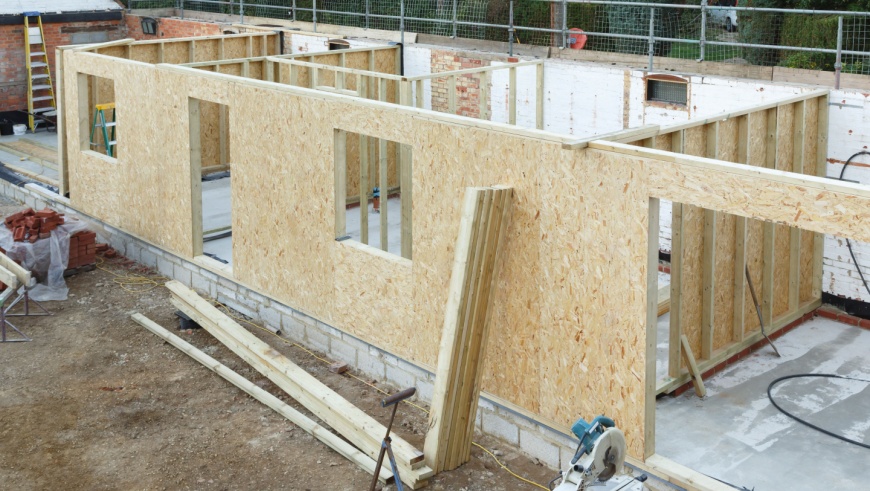
How Much Do Prefab Extensions Cost?
Ordinarily, the cost of prefab extensions is often between £1,200 and £1,700 per square metre.
What's the difference in cost between a small and medium-sized prefab extension?
So, it can often be around £18,000 for a small basic extension measuring around 15 square metres.
Medium-range prefabs, however, tend to cost around £30,000 for the total project of around 25 square metres.
Costs can increase up to £65,000 for more premium prefab extensions which feature a bathroom, kitchen or double-storey extension.
Table of Contents
- How much do prefab extensions cost?
- Prefab extension prices
- Additional prefab extension costs
- Cost of prefab extension labour
- What factors impact prefab extension costs?
- What does building a prefab extension involve?
- DIY prefab extension
- What is a prefab extension?
- Do I need an architect for a prefab extension?
- Benefits of a prefab extension
- Will a prefab extension add value to my home?
- Can I have a prefab extension?
- Where can I build a prefab extension?
- How much do different types of prefab extension cost?
- Planning permission for prefab extensions
- Building regulations for prefab extensions
- Party wall agreement
- Prefab extension alternatives
- Prefab extensions vs conventional extensions
- How can I keep prefab extension costs down?
- Prefab extension removal cost
- FAQs
- How to find and hire prefab extension contractors
- Sources
Prefab Extension Prices
Due to the range of modular extensions available, it's only possible to provide general estimates on the overall prefab extension cost:
| Size | Quality | Avg. Cost |
|---|---|---|
| Small | Basic | £18,000 - £25,000 |
| Medium | Basic | £30,000 - £35,000 |
| Large | Basic | £42,000 - £45,000 |
| Small | Average | £21,000 - £25,000 |
| Medium | Average | £35,000 - £40,000 |
| Large | Average | £49,000 - £55,000 |
| Small | Premium | £25,500 - £30,000 |
| Medium | Premium | £42,500 - £45,000 |
| Large | Premium | £59,500 - £65,000 |
Additional Prefab Extension Costs
Additional Cost of Adding a Kitchen or Bathroom
When planning a prefab extension, you may want to add on a kitchen or bathroom, so factor in the cost of a new kitchen or bathroom using the following:
| Description | Avg. Cost |
|---|---|
| Countertops | £20 - £400 per m² |
| Cabinets | £200 - £1,000 |
| Oven | £300 - £16,000 |
| Washing machine | £200 - £1,500 |
| Fridge freezer | £200 - £2,000 |
| Dishwasher | £300 - £600 |
| Bath | £80 - £1,200 |
| Shower | £50 - £550 |
| Sink | £50 - £500 |
| Toilet | £50 - £260 |
There are various other miscellaneous costs that you need to consider, including:
| Description | Avg. Cost |
|---|---|
| House rewiring | £2,000 - £3,500 |
| New heating system | £2,000 - £4,500 |
| Structural repairs | £1,200 - £2,600 per m² |
| Wallpapering | £3 - £60 per roll |
| Painting | £5 - £15 per litre |
| Carpet fitting | £12 - £60 per m² |
| Tiling | £20 - £100 per m² |
Modular Extension Cost Breakdown Calculator
Individual costs of a basic prefabricated extension (25 square metres) - Total Cost: £30,000
Materials
£25,500
Tradesmen
£3,000
Waste Removal
£1,500
Cost of Prefab Extension Labour
A typical tradesperson's rate would be £200 to £250 per day. So, for a prefabricated project, being around a week of work, can cost between £1,400 and £2,100 accordingly, but with the possibility of additional tradespeople required for such a large project, this can also incur an extra cost for the following tradesmen:
| Trade | Cost per hour | Time (15m²) | Time (25m²) | Time (35m²) |
|---|---|---|---|---|
| Plumber | £55 | 1 – 2 days | 2 - 3 days | 2 – 4 days |
| Joiner | £25 | 1 – 3 days | 3 – 5 days | 3 – 5 days |
| Electrician | £50 | 1 - 2 days | 2 – 4 days | 3 - 7 days |
| Structural engineer | £50 | 1 – 2 days | 2 – 3 days | 2 – 4 days |
| Glazier | £16 | 1 – 2 hours | 2 - 3 hours | 3 - 4 hours |
| Kitchen fitter | £40 | 2 – 3 days | 3 - 5 days | 5 – 7 days |
| Architect | £60 | 1 – 2 days | 2 - 3 days | 3 – 4 days |
What Factors Impact Prefab Extension Costs?
The cost of a house extension, whether traditional or prefabricated, can vary considerably depending on a huge range of factors, but it can often be a cheap solution compared to moving to a new house.
Factors you may need to consider include:
- Size and style of prefab extension.
- Planning costs, including architects and project managers.
- Digging and excavation.
- Drainage, heating, and electrics.
- Windows and doors.
- Strengthening the structure with support beams.
- Waste disposal.
You'll also need to factor in the costs of internally decorating your new prefab house extension. This could include flooring, plastering, painting or tiling.
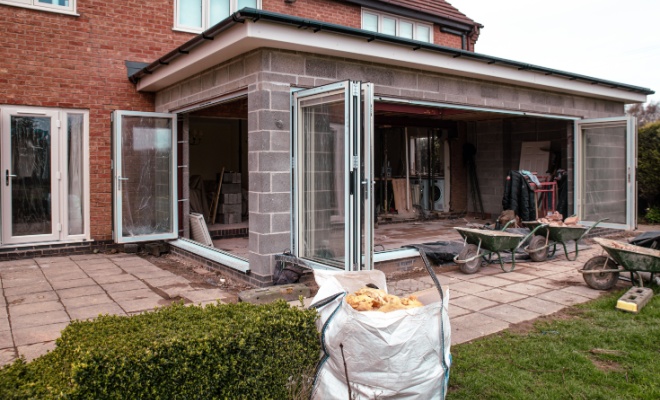
You will also need to take size and quality into consideration, as small and basic prefab extensions tend to cost from £18,000, while large premium prefabs can cost up to £65,000 depending on the type of extension you choose. You may also have to pay extra for excavation or additional costs such as house rewiring, which is typically priced at £2,000 to £3,500.
You will also have to consider the costs of the interior, for example, if you plan on installing an extra bathroom, which can cost from £200 to £2,500 just for the main bathroom essentials such as a bath/shower, sink and toilet. While a new kitchen installation could cost around £20 to £1,000 for new cabinets and for tiling, you should expect to pay between £20 to £100 per square metre.
What Does Building a Prefab Extension Involve?
There are several steps involved in the construction and installation of instant home extensions, including:
Design and Planning
Preparation
Prefab Installation
Technical Fixtures
Interior Decorating
The first step involves planning your extension. To do this, you can work with an architect or a structural engineer who will help you plan an extension that is suited to your home, while also ensuring that building regulations are met.
The design will be catered around your needs, for example, if you would prefer a larger kitchen, you could design a modular extension that expands this space, without exceeding your budget.
Once you have a plan in place, a qualified architect will then draw up some plans using the exact measurements of your space, which can then be passed to the company building your extension.
Before your prefabricated extension can be installed, the groundworks and foundations must be checked to ensure they are in good condition. This may involve some structural work, or you may just need your floor levelling out before installation.
Professional tradesmen will also ensure that all connections, such as the water, electricity, sewer and communications, are in place and working correctly.
Once everything is prepared, and your plat pack extension has been engineered, it will then be delivered and installed. It will usually come in parts, and, therefore, needs to be assembled upon delivery, with many manufacturer’s offering an installation service.
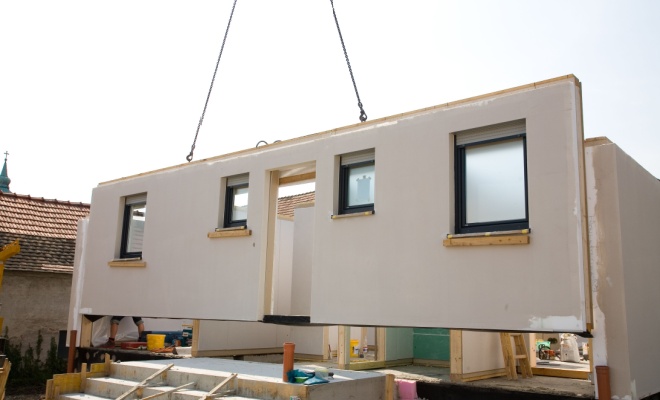
This will involve setting up the scaffolding, followed by using a crane to lift the prefab extension into position. The majority of prefab extensions will come fitted with windows and doors, although some may not and will need to be installed on-site.
Once the prefab installation is in place, technical installations such as the plumbing work, electrical wires, heating and ventilation systems should be fitted. This will involve the help of a qualified plumber, electrician, gas engineer or more trades if need be.
Once all technical installations are securely in place, a team of interior designers, decorators, joiners, tilers, and more can start on the inside of the home.
This will involve everything, including painting the walls, laying down the flooring, placing furniture and adding the finishing touches to the extension.
DIY Prefab Extension
Prefab house extensions are pre-constructed and installed by professionals, as they involve complex design, planning, construction and installation.
As these modular extensions will need to comply with Building Regulations, it's important that the project is carried out professionally and safely.
There are plenty of opportunities for DIY enthusiasts to help keep costs down with internal decorating, flooring and more. However, anything that requires dangerous equipment or signing off by an expert should be completed by tradesmen.
What Is a Prefab Extension?
Prefab is short for prefabrication, which means that a prefab extension is a building that is pre-built off-site and is therefore ready for installation on delivery. There are a variety of manufacturers who produce prefab extensions according to an individual’s preferences.
Prefab extensions are usually made up of timber or steel frame structures, which are designed and manufactured in workshops and factories.
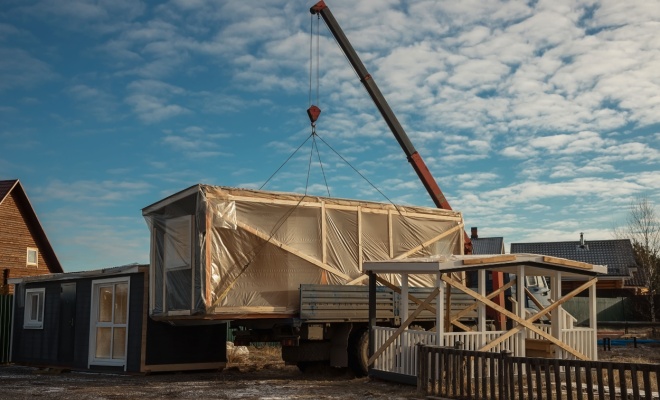
Before prefab extensions are constructed, manufacturers are given measurements and a detailed plan of what the homeowner wants. They will then produce this quickly by installing steel frames, which are quick and easy to install, unlike a slower system that is brick-built.
Do I Need an Architect for a Prefab Extension?
When planning your prefab extension, you may want to consider hiring an architect. This costs around £500 to £2,000, depending on the extent of the job. They will help you calculate the measurements of your extension in line with building regulations. They will also help you plan out the layout to ensure that you make the most of your space.
Benefits of a Prefab Extension
There are a variety of benefits for installing a prefab extension, including:
Environmentally-Friendly
Many prefab extensions are usually constructed of environmentally-friendly materials, meaning a lower impact on the environment during the construction stage.
Enhanced Insulation
Prefab extensions tend to be better insulated, especially SIP extensions, which feature structurally insulated panels, which normally have two outer layers of insulation with an extra layer of internal insulation. This prevents heat from escaping and lowers energy bills, while also providing high-quality soundproofing.
Cost-Effective
A prefab or flat-pack extension will cost between 10 and 25 per cent less than the traditional extension once you factor in the foundation and excavation costs, plus you get much less noise and impact on your everyday life.
Prefabricated buildings also reduce the total cost of labour as the installation does not take as long.
Quick and Easy Installation
Prefabricated building extensions are practical and quickly installed. This is because the prefab structure is built in a factory, so you can typically expect just 6 to 8 days of building work on-site, as opposed to a traditional extension, where your home is a messy building site for months. Plus, they can be made to blend in seamlessly with your existing home, and once finished, no one would even know that it is prefabricated.
Prefabricated extensions also allow far greater control of your home as they are built in sections offsite, so you avoid much of the hassle of extension building as the finished module is delivered to the site already made and just needs to be added to the existing building and the new foundations.
Better Aesthetic
Modern prefab extensions are nothing like those ugly, grey concrete slab buildings you may be thinking of. You can also customise them to your tastes while staying within budget.
They also offer a more private living space compared to conservatories, and they are also a lot more durable and will outlast conservatories and timber-clad type extensions by decades.
Will a Prefab Extension Add Value to My Home?
Adding a prefab extension onto your home can actually increase the value of your property by up to 23 per cent if you add on another bedroom and en-suite, while an extra bathroom increases the value by 6 per cent. The reason for this is that space is a sought-after commodity, along with additional bathrooms, which are a huge selling point.
To ensure that your prefab extension adds value to your property, you need to make sure that you have a budget in mind, so you don’t end up overspending. This is especially important if you plan to sell your home, as you do not want to spend more money that you won’t get in return, as this will leave you with no return on investment.
Can I Have a Prefab Extension?
The majority of properties can have a prefab extension installed, as long as it complies with building regulations and you have obtained a building notice to approve the work.
Under permitted development, your prefab extension can extend up to 8 metres at the rear of your property and must be no more than 4 metres higher than your existing home.
It is also important that the area where you are installing the prefab extension is fully prepared. For example, the groundwork will need to be level and secure, and if there are any issues or bumps in the ground, excavation may be required. Plumbing and wiring will also need to be fixed or installed before the extension can be secured in place.
Where Can I Build a Prefab Extension?
You can add on a prefab extension to almost any part of your home, including the rear and side, or even a wrap-around installation.
Where you install your extension will depend on the type of property you live in, as a terraced home will only be able to extend at the back of the property, while a semi-detached property can only extend on one side and the rear. Whereas detached homes and bungalows may have more freedom.
How Much Do Different Types of Prefab Extensions Cost?
There are various types of prefab extensions, including:
Steel Prefab Extension Cost
Some prefab extensions are made up of lightweight steel which features insulation on the outside of the masonry frame, which tends to cost around £35 to £40 per square metre. While galvanised steel costs £42 to £200 per square metre or more.
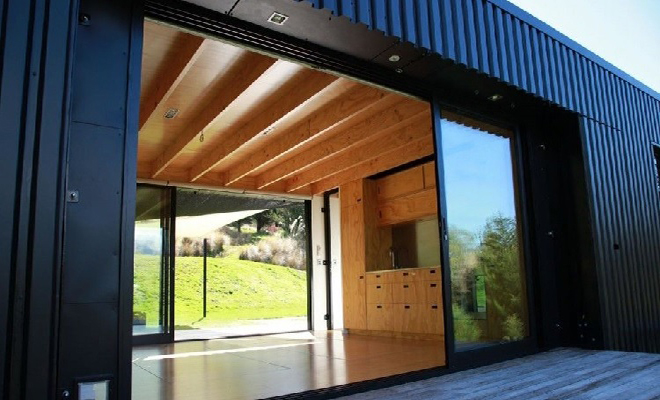
One of the main benefits of using galvanised steel is that it provides protection against corrosion, which enables the structure to last for 60 years or more in some cases. While lightweight steel can prevent cold bridging due to the location of the external insulation.
A potential downside of steel prefab extensions is steel's high thermal conductivity. This can lead to cold bridges if appropriate insulation and thermal breaks are not utilised during the building process.
Steel is also not ideal for use on its own, as other materials such as brick, concrete or wood must be combined with it to create a sturdy structure.
Timber Prefab Extension Cost
Timber frame panels are one of the most common materials, which cost around £70 per square metre and are used to construct prefab construction. Timber panels are made up of plywood sheets, which are fixed in place with studs. These are then wrapped in a waterproof barrier and external cladding.
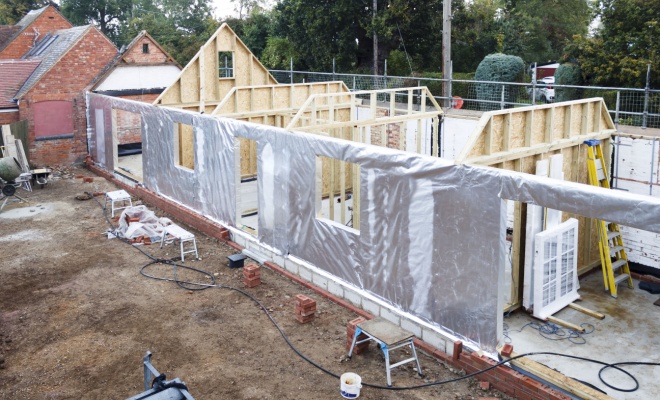
One of the main benefits of using timber panels is that construction is fast, resulting in quick installation. They are also environmentally friendly, as the majority of the timber is recycled during manufacturing.
A big disadvantage of timber frame panels is the expense, as materials can be expensive, and there may not be good access to the material in comparison to other masonry resources. Timber panels can also be quite noisy, as they are not as dense as other materials, so you may have to pay for extra insulation to be installed.
SIPs Prefab Extension Cost
Structural insulated panels (SIPs) are a type of prefab system which incorporates high-quality foam insulation between two structural panels. These tend to cost around £80 per square metre.
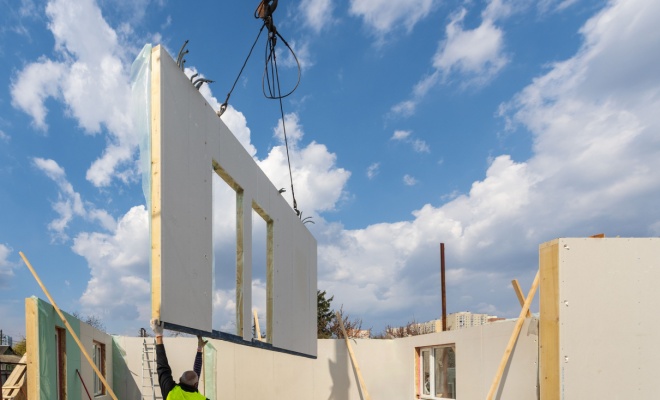
One of the main advantages of SIPs is that they are robust, efficient and extremely flexible, so they are therefore ideal for bespoke prefabs. They are also made out of foam, which means they are not susceptible to pest infestation.
While they are a high-performing prefab option, SIPs must be professionally installed to get the right amount of ventilation and moisture control, avoiding problems such as condensation in the long term.
Planning Permission for Prefab Extensions
You may not have to apply for planning permission for your prefab extension.
If your home is in a conservation area or is a listed building, you will need to request permission before work can go ahead.
In many cases, however, a rear prefab extension will fall under Permitted Development rules. These include:
- A single storey rear extension may not be more than 4m high.
- A 2 storey prefab extension cannot be more than 3m from the rear wall and must not be within 7m of the rear boundary.
- Detached homes can install a rear single storey extension of up to 8m in depth, while terraces/semi-detached homes can extend up to 6m.
There are different rules for side extensions, and it's important to note that any prefab extension must not look significantly different to the existing property.
Plus, you will need to consult your neighbours if an extension is going to extend between 3m and 6m (terrace and semi-detached) or 6m and 8m (detached). Your local authority will make the final decision.
If you do need to obtain planning permission for your prefab extension, the application should cost around £206.
Building Regulations for Prefab Extensions
Prefab extensions usually require building regulations approval. The regulations cover:
- Doors and windows, including glazing, ventilation and safety measures.
- Internal and external walls, ensuring they are structurally sound, insulated properly, and have adequate ventilation.
- Drainage, both foul drainage and surface water.
- Safe electrics, with adequate zoning and IP (ingress protection) measures if needed.

To ensure you meet building regulations, you should hire someone who is listed under the competent person’s scheme to ensure all of your prefab extension installation is compliant.
Party Wall Agreement
If you are planning to have a prefab extension built onto a wall that you share with your neighbour, then you may need to obtain a party wall agreement. This is a legal document that is agreed upon between you and your neighbours regarding the extension.
To obtain a party wall agreement, you will need to hire a party wall surveyor who will work with you to help you draw up plans for the work and provide a schedule of condition of both properties.
This often costs around £300, but it will vary based on the complexity of the agreement, so you may want to get multiple quotes.
Before getting a party wall agreement, you should first speak with your neighbour to ask for their consent, and if they do not agree, then you can begin legal proceedings.
Prefab Extension Alternatives
If a prefab extension isn’t for you, then you could consider one of the following options:
Standard Extension Cost
A conventional extension is usually made of brick and located at the rear of the property. They usually cost around £17,000 to £45,000, depending on the size and materials used.
Adding an extension set over two floors can increase costs further. While the average cost of a double storey extension is £60,000, this can increase up to around £100,000 when fixtures and fittings are taken into account.
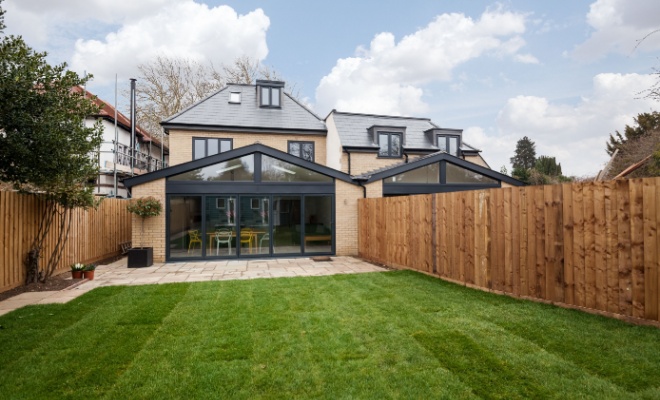
Pros
- ✔ Provides a versatile space
- ✔ Adds value to your property
- ✔ Less hassle than moving to a new house
Cons
- ✖ You may be limited by planning permissions
- ✖ Extension construction can be time-consuming
- ✖ Can take up a significant amount of land
Timber Frame Extension Cost
Timber frame extensions range from straightforward single-storey projects through to more complex extensions spanning two floors.
As the name suggests, this type of extension is made from wood and is generally considered a cost-effective and energy-efficient method of extending a property.
The average timber frame extension cost is based on how many square metres it will be and the materials used. It often ranges between £1,200 and £2,000 per square metre.
Pros
- ✔ Quicker construction time
- ✔ Lower labour costs
- ✔ Energy-efficient and climate conscious
Cons
- ✖ Additional costs can add up
- ✖ More complex installations can affect price
- ✖ May not suit the external aesthetic of your home
Glass Extension Cost
Glass extensions are completely clear and frameless constructions which have no visible supports. The average cost of installing a glass extension is around £14,000 to £70,000, with prices depending on the size and quality of the construction.
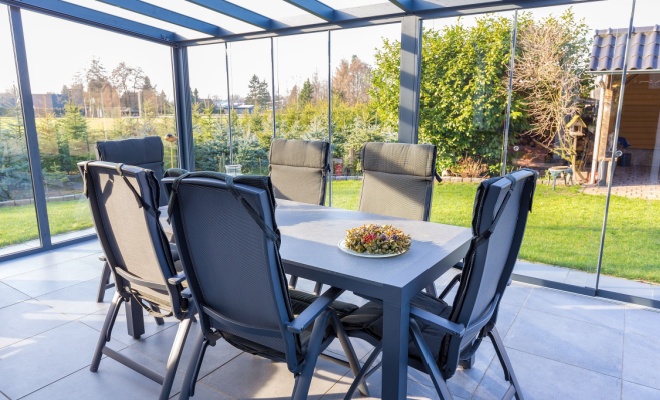
Pros
- ✔ Creates a unique aesthetic
- ✔ Helps to enhance the light and space in your home
- ✔ Provides indoor/outdoor living
Cons
- ✖ Can be quite costly in comparison to traditional extensions
- ✖ Susceptible to heat loss
- ✖ Hard to maintain
Conservatory Cost
A conservatory is an extension which is built with a glass roof and walls. The typical conservatory cost is around £5,000 to £10,000.
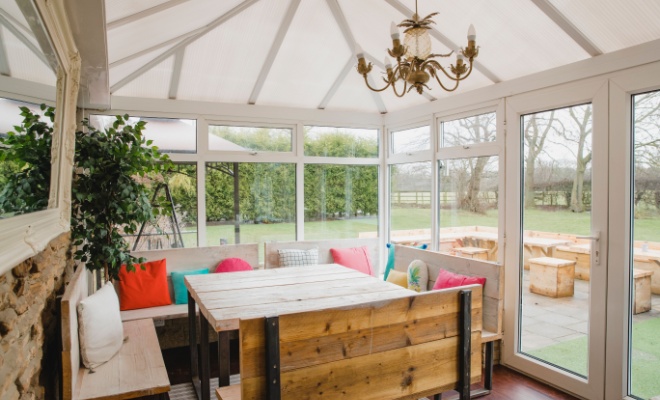
Pros
- ✔ There are various conservatory designs to choose from
- ✔ Light is enhanced in the home
- ✔ Glass roofs warm up the home instantly in the summer
Cons
- ✖ Conservatories have an inconsistent temperature
- ✖ A heating system will be required in colder months
- ✖ Planning permission is required
Orangery Cost
An orangery is similar to a conservatory, but is constructed with more brickwork. The average orangery costs between £10,000 to £40,000 due to these increased material and labour expenses.
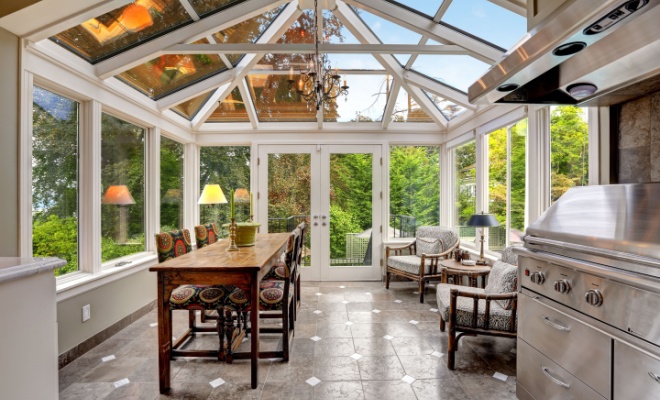
Pros
- ✔ Offers a more seamless design
- ✔ Less heat loss than a conservatory
- ✔ The brick material provides more insulation
Cons
- ✖ A more expensive option
- ✖ Installation is more complex
- ✖ Reduced light compared to conservatories
Loft Conversion Cost
Unused space at the very top of your home can be used to create a loft conversion.
While this will not be possible for all properties, making use of the attic space can provide an extension of living space without building on the garden or driveway. Prices for loft conversions start from around £15,000.
Pros
- ✔ Makes use of space already there
- ✔ Can be cheaper than an external extension
- ✔ Adds value to a property
Cons
- ✖ Not possible for all properties
- ✖ Reduces options for home insulation
- ✖ Can have a lot of added costs
Garage Conversion Cost
Converting an existing garage into a different type of space can be another excellent way of using space that's already there.
Garage conversion costs range from between £10,000 and £20,000, and there are plenty of ways to keep costs down.
Pros
- ✔ Uses existing space within your home
- ✔ No need to lay new foundations
- ✔ Cost-effective option
Cons
- ✖ Removes space for car storage
- ✖ Will require building regulations approval
- ✖ Increased costs if creating a kitchen or bathroom
Outbuilding Cost
An outbuilding in the garden could provide space for a garden office or relaxation room. Bear in mind that if the space is to be used as a bedroom or other accommodation, it will require planning permission.
Due to the range of options, an outbuilding cost can be anything from £2,500 to £10,000, and potentially more on complex builds.
Pros
- ✔ Can be used in various ways
- ✔ Prefab options are available
- ✔ Cheaper than an extension
Cons
- ✖ May require planning permission
- ✖ Costs can vary based on needs
- ✖ Not usually connected to the property
Prefab Extensions vs Conventional Extensions
There are some differences between prefab and conventional extensions, with the main distinction being that prefab extensions are pre-built before they are delivered and installed, unlike conventional extensions which are constructed onsite.
Prefab extensions are also cheaper, in comparison to a conventional extension, which takes a lot longer to install. However, the time frame for modular extensions may be longer, as it takes around 8 to 10 weeks to construct.
Unlike normal extensions which may require you to move out of your home while it is built, prefab extensions will not disrupt your home life.
How Can I Keep Prefab Extension Costs Down?
If you have a budget in mind, then there are a number of ways you can cut your prefab extension costs, including:
Having a Simple Design
By planning ahead and creating a simple design, you can save a significant amount of money. For example, if you’re planning to install an extra bathroom, you should stick with a minimalist design which includes a bath/shower, sink and toilet along with simple décor.
Cheaper Materials
Another way to reduce modular extension costs is by choosing cheap prefab extension materials such as brick and glass prefab extensions which are much cheaper than a steel installation. You should also shop around for interior materials, as this will help you find affordable furnishings which are still good quality.
Avoiding Complicated Groundwork
To lower costs, you should try to avoid installing your prefab extension near trees, drainage or electrics, as this can result in complicated and costly groundwork.
Complying with Regulations
Finally, you can save money on your prefab extension installation by complying with the requirements set out in planning permissions and building regulations, as this will prevent you from paying extensive fines or paying to restore your extension.
Prefab Extension Removal Cost
If you want more garden space in your property and a prefab extension is taking up room, you can have it removed. If the prefab building is in good condition, it can be removed in one piece with the help of a crane and a qualified operator which costs around £700 for contract lift hire.
Some prefab extensions may need to be demolished before removal. You can hire a professional to do this or do it yourself. However, this is usually not advised unless you are a seasoned DIY enthusiast. You will also need to dispose of the waste by hiring a skip, which normally costs around £70 for a small skip and up to £440 for a large-scale skip.
FAQs
A completely finished building which just needs to be connected to your existing home then it is usually clad to match the external appearance!
How to Find and Hire Prefab Extension Contractors
To ensure your extension is robust and long-lasting, you should hire prefab extension experts who can help you with everything from planning your extension to installing it. Ask if the labour includes a guarantee too.
Before hiring a company for the job, you should take a look at their website or ask them directly for evidence of previous work. You should also check that they have public liability insurance, as this will protect them should anything go wrong.
Sources
https://www.planningportal.co.uk/permission/common-projects/extensions/planning-permission
https://www.planningportal.co.uk/permission/common-projects/extensions/is-building-regulations-approval-needed-for-an-extension
https://www.planningportal.co.uk/permission/common-projects/electrics/building-regulations-general-information
https://blog.glwengineering.co.uk/the-advantages-disadvantages-of-steel-frame-construction










